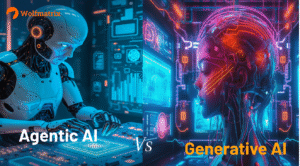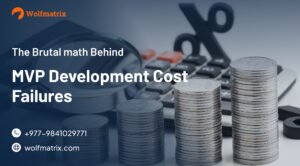These days the modern business economy is getting more digital and based on enterprise applications. The integration of technology to enhance enterprise apps has seen a rapid rise in the IT industry’s role in other businesses. Business Companies have begun to focus more on customer requirements to meet user needs. Service-based businesses are rapidly providing user support and improving billing systems and workflow communication. They are always looking for additional features integration in their enterprise apps as well.
If you own a business, I hope you are doing the same to meet your customers ‘requirements. Today the stakes in the development of business web applications are high. Your enterprise apps product should follow thousands of different specifications, from security and user experience to reliability and offline capability. There are a host of particular user criteria that you need to reach. So where are you going to start?
This article will help you cover a lot if you have an organisation or a business and want an enterprise application that automates operations or makes them more efficient. Keep on reading!
What is enterprise application development?
Enterprise Application is a digital tool to make an organisation’s day to day activity more productive and effective. Enterprise Application Development is created based on an organisation’s environment, where it aims to be utilised and planning to meet a goal.

Additionally, it is also known as the development of custom applications. You typically get valuable tools to grow the business as a result. Moreover, the advancement of application for undertaking models or marks the organisation’s functioning, since once the application is obtained, what happens is that new methodologies and processes are created.
According to Martin Fowler, “Enterprise applications are about the display, manipulation, and storage of large amounts of data and the support or automation of business processes with that data.”
Some examples of enterprise development applications are Slack, Asana, Trello, Zoom, etc.
How is the Enterprise applications different from other applications?
As the name suggests, enterprise applications are made to benefit an organisation or a business rather than any individual. Enterprise applications help schools, government sectors, NGOs, INGOs, banks, financial institutions, etc., to meet their collective organisation goals. Some processes that enterprise applications help achieve are billing platforms and methods, security, customer management, enterprise resource planning, etc.
Enterprise Application Development History
The Database management system’s evolution and structured programming in the 1970s paved the way for storing and retrieving data. In the 1980s, relational theory brought the concept of relational technology.
Rational technology using SQL (Structured Query Language) could retrieve information on multiple rows simultaneously. Since SQL could be easily integrated with most high programming language, it was the next step for enterprise application development.
At present, there are thousands of enterprise apps that are capable of improving millions of business platforms.
10 Common Features of an Enterprise Application Development Platform
Almost all of the enterprise applications in the market have some features in common. The apps may serve a different purpose, but their primary features are all the same. Today, I will list 10 standard features that all enterprise applications share in the below section.
1. Scalability
The quality of a software product is scalability. An Enterprise Application should be scalable when the customer requirements demand it to. A product that is just not scalable will collapse out of business in a small amount of time. Scalability defines the software’s development and progression, performance, features, and any feature it finds necessary.
Typically, an enterprise application should meet a small scale business platform and a significant organisation in the business.
2. Availability
Businesses rely heavily on a third-party enterprise application to operate. The enterprise app should always be available to use even if the app development is in process.
3. Reliability
Since an enterprise application deals with sensitive information, it should always be reliable. Any critical mistake in the app should be fixed in the enterprise application development phase itself.
4. Security
Data security is one of the significant aspects of enterprise application development. Any application providing features such as a billing system should not leak its users’ sensitive information to other platforms.
5. Mobile-Friendly Design
An enterprise application can be based upon both web and mobile applications. The requirements of the web application may differ from a mobile feature. So, the enterprise application should have both mobile and web integration design to meet user requirements.
6. Invisible Maintenance
Continuous enterprise application development shouldn’t degrade the enterprise application’s performance. Developers should develop a beta version of the app to bring new changes to the app.
7. Performance Speed
Almost all applications are tested in terms of load and performance in the enterprise application development phase.
8. Storage
The problem of storage is a crucial one. This should be regarded with a lot of information in the development of enterprise software. And not just because one works with massive amounts of data, it must also be saved in the right manner to be used in the future. To assess efficiency, either through an audit, see if it can be improved, business analysis, etc.
It must be well stored. The cloud can become a useful option, but today there are far more options for the application development professional or the team.
9. Portability
Any application development should consider portability, let alone the enterprise application development community. Portability refers to the ability of an application to function on different hardware and operating system.
10. Interoperability
The development process of a business application is complex. Many applications must have compatibility with other applications to operate. E.g., a company billing system should be able to connect to your bank account to conduct any monetary transaction.
Types of Enterprise Applications
Customer Relationship Management (CRM) Software
At the very last minute, any business specialist understands the pain of losing a potential client. There will be moments where you can often fail to close down a deal, upsell your clients, cross-sell, or market your current existing customers with those new products.
That is where it comes into play with Customer Relationship Management (CRM). CRM also can be described as a brain-possessing contact list. It gives you an essential outline of the exact position you are in with your customer.
CRM includes encounters in person, via social media, phone and email, and likely customer service calls.
Project Management Tools

This type of application allows you to communicate with colleagues from all over the world. It makes it easier to set goals or targets; this will update any team member to get the task done.
Typically, tools like this offer an outline of all current tasks. And encourage you to dig into each of them to review every accomplishment, every detail, and every next task you need to complete to keep your progress on track.
Marketing Automation
Tools like marketing automation app allow marketing teams to spend less time manually. And it ensures efficient launching of marketing campaigns on time.
As your company gets expanded, You will need to simplify your regular marketing operation. It will take so much time to connect on a mailing list with each client or respond to Facebook comments.
That’s why enterprise software for marketing automation tech is so realistic. These applications and tools allow you to quickly and easily automate contact with your audience through email, SMS, social media, and digital advertising.
Enterprise Resource Planning (ERP) Software
The ERP software takes all the various business products, digitizes them, and builds network topology around them, ensuring that all to perform with the same core documents and up-to-date information. ERP also provides that various enterprise software tools, including CRM or project management systems, are portrayed in sync.
Implementation of the ERP will significantly clean up how larger organisations work by making processes and workflows more organised and clear. They also provide valuable perspectives that help to recognise bottlenecks and inefficiencies and also to improve future planning.
Business Intelligence (BI)
Working in a competitive business environment involves ensuring that the data analysis follows the highest quality requirements. Your business position should also be found where you are now, how you got there, and where you need to be.
Here’s where BI software works by extracting, harmonising, and summarising data from all your sources of data. And allow you to run queries that obtain useful information from these various sources. Such observations are typically presented in dashboards, which tells you how the business is doing and how much progress you are making on reaching your KPIs at a glance.
Enterprise Application Development Process

Usually, application development is governed by the SDLC process and consists of the following steps:
- Design and Planning Phase
- Application Development Phase
- Application Testing Phase
- Application Deployment Phase
- Application Maintenance Phase
Enterprise Application Development is no different from any other application development. Let’s discuss the above concept in detail.
1. Enterprise Application Design phase
First, you need to consider the overall strategy of how the software improves employees’ and client’s lives. It is crucial to set goals precisely to have the app’s impact on your business. Once you decide on your set up goals, the application development team would determine the provided software’s function.
2. Enterprise Application Development phase
When you understand what your enterprise application wants to look like, the enterprise application development phase will begin. The developer will create a code that meets the user’s software and needs the entire time. The enterprise application development should reflect its users’ needs according to the user experience and ease to use.
3. Testing and Deployment phase
After the application development process, the next process is to test the app thoroughly with the source of code and documentation. The testing phase must be comprehensive. The software should meet relevant user experience. After testing, if you are satisfied with the software’s performance skill, then it is time to release the work with your developer to determine a deployment time frame safely.
4. Application Maintenance
The app development is not complete even after deployment. Your company needs to maintain and upgrade apps constantly. Your company may need any additional features or scalability in the future as well.
Conclusion
Enterprise applications are technical solutions designed to enhance existing processes and drive business growth. These applications are custom-built to meet a company’s unique needs, providing an exciting opportunity for those aiming to improve various aspects of their success, especially those well-versed in information systems. When implemented, they can work seamlessly and effectively.
Several business software options are available on the market that can be entirely rebuilt and perfectly optimised for your business. If you have a business in Australia and are looking for an app development company to create software that enhances your effectiveness, enterprise application development services are the perfect solution. These services are tailored to meet your specific business needs, ensuring optimal performance and growth.
We hope this information has been helpful. If you have any further questions or need assistance with app development inquiries, please don’t hesitate to contact us.
In case you’re wondering to learn more about the do’s and don’ts of enterprise application development, check out our blog post for expert insights and valuable tips.




